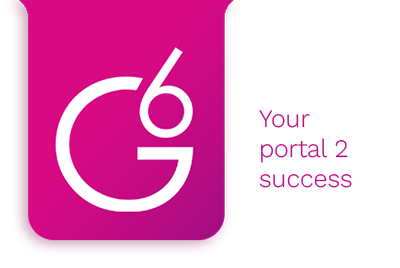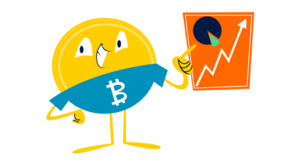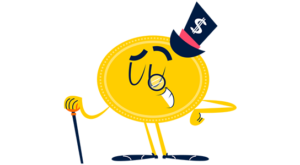Is your sales team overspending to acquire new customers? Are your sales tactics inefficient?
You may not be using the proper sales methodology! Small businesses everywhere struggle with sales because of this simple fact.
Hi, my name is AJ. After selling my company for multiple seven figures, I started Small Business Bonfire to help entrepreneurs avoid the mistakes I made!
Knowing the ins and outs of inbound and outbound selling strategies was one of the best things my team and I did to boost conversions!
If you want to learn how to do the same, keep reading!
Key Takeaways
Inbound sales focus on customers who already have an interest or need for your products and services.
Inbound sales reps attract leads through engaging social media content and SEO.
Outbound sales aim to attract people who may not know about your brand (yet).
Outbound sales reps use strategies like email campaigns and cold calls to acquire leads.
Inbound sales is a modern approach to selling where you focus on attracting customers who are already interested in your product or service.
Think of an inbound sales strategy like fishing:
Instead of going to sea to cast a net and hope for the best, you set out bait and wait for the fish to come to you.
In the case of inbound sales, the “bait” is engaging content, such as:
Blog postsVideos Social media updates
Remember, whatever content type you choose, the “fish” (your customers) must find it interesting to encourage them to purchase your products or services.
This way, you’re not bothering people who aren’t interested.
Instead, your inbound sales team only talks to people who’ve shown they care about what you’re selling.
Put simply, inbound strategies are a more friendly and efficient way to make sales, and it’s usually more enjoyable for the customer, too!
One way inbound and outbound sales differ is in the sales process.
For instance, the inbound sales process includes the following five steps:
Inbound marketing content Lead qualification Product or service presentation Negotiation Closing the deal
Inbound marketing is a strategic approach teams use to attract potential customers by creating valuable content and experiences tailored to them.
So, instead of broadly advertising products or services, inbound marketing addresses your target audience’s specific needs and problems.
As a result of creating relatable content, your sales reps earn each lead’s attention and trust.
For instance, inbound marketing could involve the following actions:
Publishing informative blog posts on topics related to your industryOffering engaging video tutorials demonstrating your products in action Posting insightful social media updates that resonate with your audience
As a result, potential customers become more likely to seek out your business independently.
Put simply, with proper content marketing, your sales reps attract higher-quality leads and more effective sales conversions!
Lead qualification determines whether a prospective customer has the need, interest, and financial capability to purchase your product or service.
The lead qualification step is crucial because it enables sales reps to prioritize their time and energy on leads with the highest potential to convert into actual customers.
Further, by effectively qualifying leads, businesses can do the following things:
Increase sales efficiencyImprove customer satisfaction Boost overall return on investment
The product or service presentation is a critical stage in inbound sales where a tailored demonstration of your offering occurs.
Also, this step is crucial because it allows inbound sales teams to do the following things:
Showcase the unique attributes and benefits of your product or service.Directly address the inbound leads’ specific needs and pain pointsProve that your solution is the best fit for the customerPersuade leads to make a purchase decision
Negotiation is the fourth step in the inbound sales process.
At this point, the sales team and the prospective customer discuss the terms of the potential deal, including:
Pricing Contract detailsTimeline Deliverables
Negotiation is a critical phase that requires excellent communication and problem-solving skills because both parties work towards a mutually beneficial agreement!
Closing the deal is the final stage of the inbound sales process!
Closing the deal means the customer purchases your products or services and finalizes the transaction.
Therefore, this step marks the successful conversion of a prospective lead into a paying customer!
Like anything in life, there are pros and cons of inbound sales.
The primary advantages of implementing inbound strategies include the following:
It’s a customer-centric selling approach It’s cost-effectiveIt helps build more meaningful long-term client relationships
Customer-Focused Approach
The inbound sales strategy is directed toward individuals already interested in or needing your products or services.
Therefore, this personalized approach leads to the following things:
Higher customer satisfaction levels Improvements in the chances of making a sale
Cost-Effectiveness
Since inbound sales rely on drawing customers through content creation and optimization, it’s often more cost-effective than outbound sales tactics.
For instance, an outbound sales strategy typically requires substantial cold calling or mass advertising resources!
Long-Term Relationships
Lastly, a significant advantage of inbound sales strategies is that they nurture long-term relationships with customers.
For instance, companies can earn prospective customers’ trust and loyalty by providing valuable content and solutions to their problems.
In the end, these long-term relationships lead to repeat business and excellent referrals!
The cons of inbound sales primarily revolve around these two factors:
Time consumption The strategy relies on excellent content
Time Consumption
Inbound sales strategies require a significant time investment.
For example, these strategies demand the following things, which can’t happen overnight:
Content creationSearch engine optimization (SEO) Building customer relationships
Instead, attracting and nurturing leads takes time before they convert into customers.
Therefore, inbound sales processes might not be the most suitable for businesses seeking quick sales!
Dependence on Quality Content
Inbound selling greatly relies on the quality and relevance of your content.
For instance, if your content doesn’t resonate with your target audience or fails to rank well in search engine results, your inbound sales strategy may not yield the desired results!
Therefore, investing in top-notch content creation and SEO is a must, which could be a challenge for smaller businesses with limited resources.
Here are two inbound sales examples to help your company build an effective inbound sales strategy!
HubSpot, a leading inbound marketing and sales software company, is an example of inbound sales!
HubSpot uses its blog as a primary tool to attract visitors, offering a wealth of informative and helpful content for marketers.
Further, HubSpot’s articles cover many topics to address its target audience’s pain points.
These resources attract potential customers and establish HubSpot as a thought leader in the industry!
Also, visitors who find the content valuable may try HubSpot’s software, which further allows the company to nurture these leads and convert them into paying customers.
Zappos, an online shoe and clothing retailer, exemplifies inbound sales through outstanding customer service.
Beyond the high-quality and diverse range of products, Zappos invests heavily in providing exceptional customer experience.
For instance, the brand’s 24/7 customer service and 365-day return policy are tailored to meet the needs of its customers, turning one-time buyers into loyal, repeat customers.
Zappos is an excellent example of how addressing customers’ needs and providing valuable service can pull customers in rather than relying on aggressive outbound sales tactics!
Outbound sales is a traditional method of selling where a company initiates a conversation with potential customers.
So, imagine if you were a pizza shop owner who gives out flyers to people passing by, hoping they’ll see your delicious pizza and decide to come in and buy one.
Or, picture yourself getting a phone call from a company trying to sell you a new internet service; that’s also outbound sales!
Essentially, outbound sales strategies are when the seller reaches out to the buyer instead of vice versa.
The outbound sales process differs from the inbound one.
For instance, outbound sales processes have the following six steps:
Outreach to potential customersLead qualification Product or service demonstration Negotiation Closing the deal
As you can see, some steps in the inbound and outbound sales processes are identical.
However, the approach is different!
The outreach phase in outbound strategies involves identifying potential customers and initiating contact.
The outreach step may incorporate various tactics, such as:
Cold callingEmail marketingSocial media advertising
Regardless of the strategy, the sales team will introduce your product or service to prospective customers!
Further, the outreach phase aims to generate interest and set up a more in-depth conversation or meeting to discuss the product or service in detail.
Remember, lead qualification is crucial for outbound sales teams because it helps them identify potential customers most likely to convert.
When sales reps focus on the right prospective customers, it optimizes their time and resources!
Also, the lead qualification process ensures teams don’t waste sales efforts on uninterested or unsuitable prospects.
As a result, correctly qualifying leads maximizes the chances of closing deals and improves sales efficiency!
Outbound sales reps must provide a product or service presentation because it conveys the value proposition to potential customers.
Further, offering a sales pitch allows the outbound sales team to do the following things:
Convincingly demonstrate how their product or service can resolve the customer’s problem. Explain how products or services meet the prospect’s needsIncrease the likelihood of successful lead conversion
Negotiation is pivotal in outbound sales strategies because it provides a platform for both the seller and the customer to reach an agreeable deal.
When each party benefits from the deal, it enhances customer satisfaction and boosts sales conversion rates.
Also, by facilitating discussions around pricing, terms, and other specifics, negotiation can cater to the customer’s needs and constraints.
As a result, the negotiation step fosters a sense of trust and partnership that can lead to long-term customer relationships!
Lastly, there’s closing the deal!
At this point in the outbound sales process, the following things happen:
Both parties agree on the contractThe customer commits to the purchaseThe outbound sales team marks the successful conversion of a lead into a paying customer.
Still, the importance lies in the follow-up after closing the deal!
Following up with buyers leads to the following things:
Helps maintain a healthy customer relationshipEncourages repeat business Potentially leads to referrals
Remember, inbound and outbound sales strategies aren’t perfect.
Therefore, outbound selling has a few cons to know about. However, there are upsides to this strategy!
Outbound sales strategies have several advantages, including the following ones:
The tactics offer quick results A sales team has control over the target audience Teams can easily scale the methods
Here’s what you need to know about each of these advantages!
Quick Results
Outbound sales strategies, like cold calling and email marketing, often yield immediate responses.
This immediacy in responses benefits businesses looking for quick wins or to boost sales in a short period.
Further, quick results offer instant gratification for sales reps, which can also be highly beneficial for motivational purposes!
Control Over the Target Audience
With outbound sales, companies can target individuals or businesses that fit their ideal customer profile.
This precise targeting can lead to higher conversion rates.
On top of that, understanding who you’re catering to ensures your selling methods are on track to resonate with these people!
Scalability
Lastly, an advantage of an outbound strategy is it’s more easily scalable.
For instance, teams can quickly scale outbound sales methods, particularly those using digital platforms.
Therefore, as a company grows, it can increase its outreach efforts proportionally, reaching a more extensive customer base!
Despite the significant advantages, outbound sales strategies also come with a set of challenges, including:
Some consumers find the tactics intrusive There are lower conversion rates than inbound sales
Here’s what you need to know about these two critical drawbacks.
Intrusiveness
One con of outbound sales methods is their intrusive nature.
For instance, tactics like cold calling or unsolicited emails can sometimes be perceived as annoying or interruptive by potential customers.
Therefore, this intrusive approach can lead to a negative impression of your brand and even deter potential customers.
Low Conversion Rates
Another disadvantage is that outbound sales tactics often result in lower conversion rates compared to inbound strategies.
Since outbound strategies involve reaching out to potential customers who may not be familiar with your brand or product, the likelihood of conversion can be relatively lower.
As a result, this outcome means sales teams may need to contact more prospects to achieve the desired number of conversions!
Two classic examples of strategies to gain outbound leads include the following:
Cold calling Email marketing
Cold calling is a traditional outbound sales strategy where sales reps directly contact prospective customers, usually via phone calls, without prior contact.
Despite its traditional nature, businesses still widely use cold calling for lead generation.
Here’s how the strategy works:
First, the sales rep introduces the product or service, accentuating how it can address the prospect’s needs or solve their problems.
Then, the sales agent attempts to gain contact information or close the sale over the phone!
Although this method can be seen as intrusive, it allows for immediate feedback and can lead to instant results when executed effectively.
Email marketing is another common outbound sales approach.
In this method, a company sends emails to a list of potential customers or a targeted demographic.
Often, the emails include the following things:
Information about the company’s products or servicesPromotional offers Educational content
The key to successful email marketing lies in personalization and value addition, making the prospect feel that the email is specifically tailored for them and not just a generic sales pitch.
Further, while this tactic has a slower response rate than cold calling, it’s highly scalable and can quickly reach a large audience.
Regarding inbound vs. outbound sales, there are a few important factors, such as:
Investment The sales funnel Scalability Audience Business Type
Below, I’ll show you how inbound and outbound sales are similar and different for each factor!
One way inbound and outbound sales differ is regarding investment.
When I say “investment,” I mean in both time and financial commitment.
How They’re Similar
Inbound and outbound sales are similar in that they both require a significant investment of time and resources.
For instance, both strategies demand the following things:
Financial commitment: Tools, platforms, and trainingTime investment: Planning, executing, and fine-tuning the respective sales approaches
How They’re Different
Inbound and outbound selling techniques differ in the type of time and financial investment they require.
For instance, inbound sales involve investments in SEO, social media marketing, and online ads.
In comparison, outbound tactics require investments in training for cold calls, ensuring the sales representative knows what to say to persuade potential buyers!
Another factor to consider when comparing inbound vs. outbound sales is the sales funnel!
How They’re Similar
In terms of the sales funnel, inbound and outbound sales processes involve attracting, engaging, and converting prospects.
Also, the strategies require targeted efforts to nurture leads through the funnel, from initial contact to closing the deal.
How They’re Different
Inbound sales funnels typically start with the consumer seeking out the company or product due to an existing need or interest.
However, the outbound sales funnel is initiated by the business reaching out to potential customers, often necessitating more aggressive follow-ups and persuasion techniques.
Scalability refers to the capability of a sales technique to handle a growing amount of work or its potential to accommodate growth!
Therefore, it’s crucial to analyze between inbound vs. outbound sales.
How They’re Similar
Inbound and outbound sales strategies possess inherent scalability; as the company expands, these strategies adjust to handle an increased volume of work.
Further, this scalability stems from leveraging digital platforms to reach broader audiences!
How They’re Different
Outbound sales methods often require a proportional increase in resource allocation (e.g., more sales representatives or contact lists) to scale up.
In contrast, inbound sales, emphasizing content creation and online presence, can scale up more efficiently because they leverage digital platforms and search engine optimization!
Next, it’s critical to consider the audience, especially when deciding between outbound or inbound sales.
How They’re Similar
Outbound and inbound sales are alike because they target specific customer segments and use detailed buyer personas to tailor their messages effectively.
Put simply, they aim to reach an audience that will find value in their product or service!
How They’re Different
In terms of audience, outbound sales often target a broad demographic and employ mass communication methods.
On the other hand, inbound sales focus on organically attracting customers actively seeking solutions, resulting in a highly engaged audience.
Lastly, you must consider your business type before determining your team’s sales techniques.
How They’re Similar
In terms of business type, both inbound and outbound sales methods are adaptable and can be used effectively regardless of the nature of the business.
So, whether it’s a B2B or B2C startup or an established business, companies can mold the strategies to align with the business’s needs and objectives.
How They’re Different
Outbound sales plans often fit well with B2B businesses, where high-value deals are standard, and reaching out directly to key decision-makers can be more effective.
On the contrary, inbound sales are generally better suited for B2C businesses.
Inbound works better with B2C due to the large potential audience and the consumer’s tendency to research and seek out products or services that best meet their needs!
Below, I’ve compiled some questions you and your team must ask before committing to inbound or outbound strategies.
These questions will give your team a better idea of the most efficient method for your company!
Considering your budget before choosing between inbound and outbound sales is crucial, as both strategies involve different financial commitments!
For instance, inbound sales often require substantial investments in the following things:
Content creationSEO Digital marketing tools
In comparison, outbound sales may necessitate spending on training, contact lists, and more direct sales resources.
Therefore, understanding your budgetary constraints allows you to select a strategy that maximizes your return on investment and aligns with your financial capabilities!
The level of education your product needs is vital because it influences the best sales approach.
For example, high-education products often benefit from inbound sales because content marketing allows for detailed product explanations and demonstrations.
On the other hand, products that require less education might benefit from the directness of outbound sales techniques.
The average revenue per sale is critical because it can shape the choice between inbound and outbound sales strategies, and here’s why.
Outbound sales often prove more effective for high-ticket items due to personalized attention and direct communication.
In contrast, inbound strategies can leverage volume through online platforms and SEO for lower-cost items, leading to substantial combined revenue.
The size of your target audience is a significant factor when choosing between inbound and outbound sales because it can influence the efficiency and effectiveness of your sales strategy.
Your sales team can serve a larger audience through the widespread reach of inbound marketing through digital platforms.
On the other hand, a smaller, more targeted audience could benefit from the personalized approach of outbound sales tactics!
The speed at which your customers typically make purchases is crucial in the inbound versus outbound sales debate.
If the purchase decision is relatively quick, outbound sales tactics can efficiently drive these fast conversions.
In contrast, inbound strategies are more suitable for products or services with long decision-making processes.
Further, inbound strategies allow potential customers to gather information and make well-informed decisions.
Evaluating the ease of inbound vs. outbound sales is not straightforward because it hinges on numerous factors, such as:
Your business modelTarget audience The nature of your product or service
However, in terms of processes, inbound sales might be perceived as “easier” since they attract customers already seeking solutions.
Because inbound sales attract interested prospects, it reduces the need for aggressive persuasion.
Therefore, the sales process becomes more of a dialogue and less of a pitch, often leading to higher-quality leads.
On the other hand, outbound sales teams directly reach out to consumers, which can be challenging.
What makes outbound tactics even more challenging is that there’s an increase in consumer resistance to unsolicited contact.
Outbound sales can be simplified if your business has a well-defined target audience and a compelling value proposition.
As you can see, the “ease” of either approach is subjective and largely depends on your business’s unique circumstances.
As you have seen, inbound and outbound sales are excellent selling strategies.
Still, it’s crucial to consider your product or service, budget, and target audience before committing to one of these methods!
Which selling tactic is best for your brand, inbound or outbound? Let us know why in the comments section!
The post Inbound Vs Outbound Sales: Don’t Choose Before Reading This appeared first on Small Business Bonfire.
—
Blog powered by G6
Disclaimer! A guest author has made this post. G6 has not checked the post. its content and attachments and under no circumstances will G6 be held responsible or liable in any way for any claims, damages, losses, expenses, costs or liabilities whatsoever (including, without limitation, any direct or indirect damages for loss of profits, business interruption or loss of information) resulting or arising directly or indirectly from your use of or inability to use this website or any websites linked to it, or from your reliance on the information and material on this website, even if the G6 has been advised of the possibility of such damages in advance.
For any inquiries, please contact [email protected]




